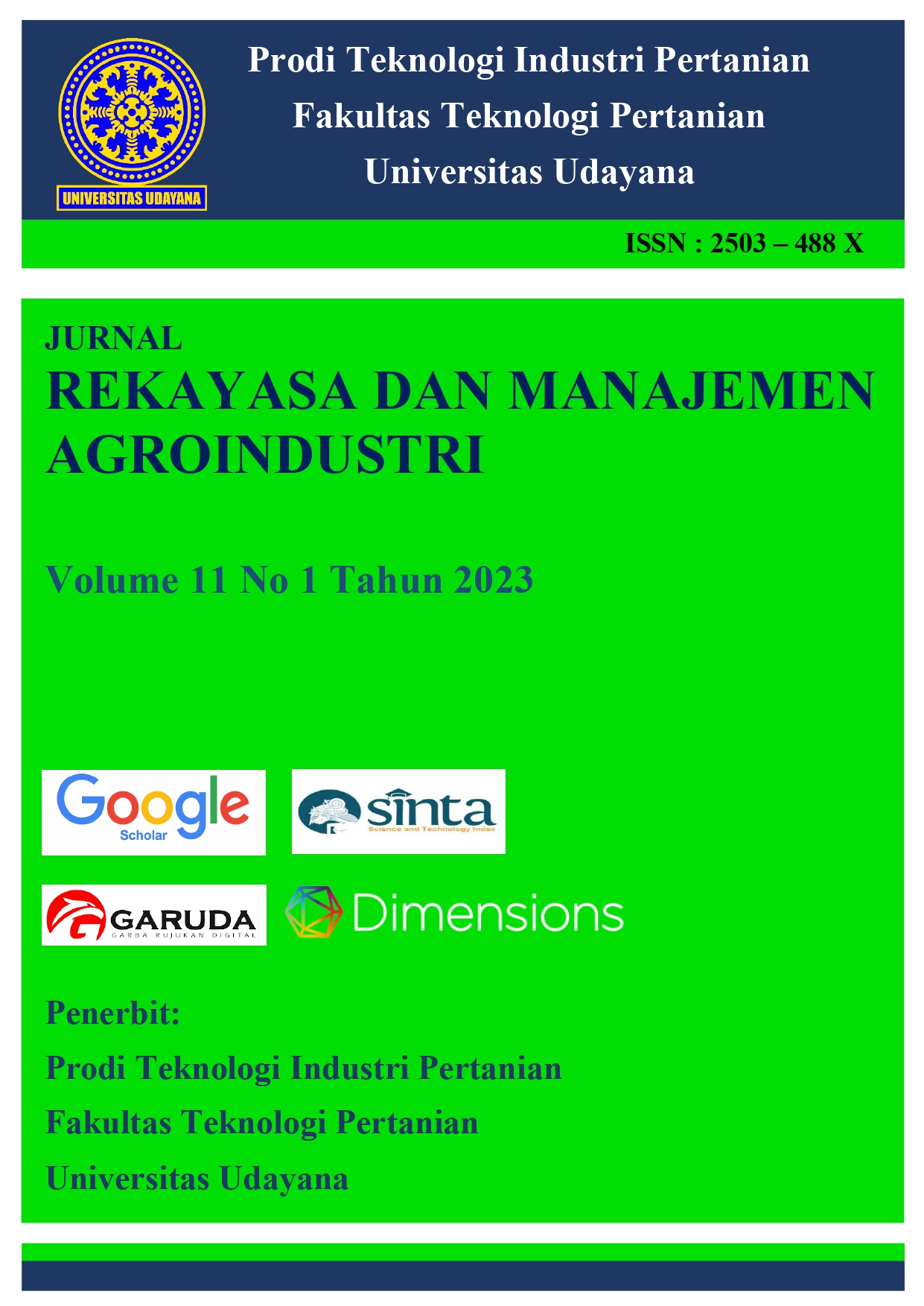Faktor-Faktor Yang Mempengaruhi Produksi Tomat di Kelurahan Kawangu Kecamatan Pandawai Kabupaten Sumba Timur
Abstract
Horticultural products such as tomatoes are complementary ingredients that must be met for many consumers because they are needed as a complement in making juice, chili sauce, and other industrial raw materials. In addition, the need for tomatoes is also increasing along with the increase in population and the number of culinary businesses at this time, so that tomato production needs attention. This study aims to analyze the factors that influence tomato production in Kawangu Village, Pandawai District, East Sumba Regency. The location selection was determined purposively with the consideration that Kawangu Village is one of the centers of tomato production in East Sumba Regency. The research method used in this study is a quantitative method with the number of respondents used in this study as many as 40 people who were taken randomly. The data analysis technique uses the Cobb-Douglas production function model in the form of the natural logarithm (ln). The results of this study indicate that the use of inputs such as land area and manure has a significant effect on tomato production, while other factors such as seeds, urea fertilizer, pesticides, and labor have no effect on tomato production in Kawangu Village.
Downloads
References
https://sumbatimurkab.bps.go.id/publication/download.html?/ diakses tgl 18 januari
2022
BPS Kabupaten Sumba Timur. 2021. Statistik Pertanian Kabupaten Sumba Timur 2020. https://sumbatimurkab.bps.go.id/publication/2022/01/13/c9018dd87f23a78e030be62e/statistik-pertanian-kabupaten-sumba-timur-2020.html/diakses 18 September 2022
BPS Propinsi NTT ( Statistik Pertanian Hortikultura SPH-SBS). 2022. Produksi Tanaman Sayuran Menurut Kabupaten/Kota (Kuital)/ https://ntt.bps.go.id/indicator/55/595/1/produksi-tanaman-sayuran-menurut-kabupaten-kota.html/diakses pada 27 September 2022
Firdaus, M. (2017). Manajemen Agribisnis. CV Andi Offset.
Hanafie, R. (2010). Pengantar Ekonomi Pertanian. CV Andi Offset.
Karuku, G. N., Kimenju, J. W., & Verplancke, H. (2017). Farmers ’ perspectives on factors limiting tomato production and yields in Kabete , Kiambu County , Kenya. East African Agricultural and Forestry Journal. 82(1), 70–89.
Koisine, H. Y., Paitung, M., Wisnujati, N. S. 2019. Faktor-Faktor Yang Mempengaruhi Produksi Tomat Di Desa Claket, Kecamatan Pacet, Kabupaten Mojokerto. Jurnal Ilmiah Sosio Agribis. 19(1): 53-66
Lamusa, A. (2004). Faktor-Faktor yang Mempengaruhi Produksi Tomat ( Suatu Kasus Di Wilayah Kebun Kopi ) Kecamatan Tawaili Kabupaten Donggala. J-Agrisains 5(1), 35–42.
Sita, B. R., & Hadi, S. (2016). Produktivitas dan Faktor-Faktor yang Berpengaruh Terhadap Produktivitas Usahatani Toat (Solanum Lycopersicum Mill) di Kabupaten Jember. JSEP, 9(3), 67–78.
Soekartawi. (2002). Prinsip Dasar Ekonomi Pertanian. Teori dan Aplikasi. Raja Grafindo.
Soekartawi, Soeharjo, A., Dillon, J. L., & Hardaker, J. B. (2011). Ilmu Usahatani Dan Penelitian Untuk Pengembangan Petani Kecil. Universitas Indonesia (UI-Perss).
Sugioyno. (2012). Metode Penelitian Administrasi dilengkapi dengan Metode R dan D. Alfabeth.
Wadu, J., Mbana, F, R, M., Saragih, E, C., Retang, E, K., 2020. Determinan Produksi Padi Sawah Di Daerah Irigasi Kecamatan Pandawai Kabupaten Sumba Timur. Agrilan: Jurnal Agribisnis Kepulauan. 10(2):188-199
Yarangga, J. M., Imbiri, S., Hutabarat, M. 2015. Analisis Faktor-Faktor Yang Mempengaruhi Produksi Usahatani Tomat Di Distrik Oransbari Kabupaten Manokwari Selatan. Jurnal Sosio Agri Papua. 4(1):45-57

Ciptaan disebarluaskan di bawah Lisensi Creative Commons Atribusi-BerbagiSerupa 4.0 Internasional.
Seluruh artikel di Jurnal ini dapat disebarluaskan atas tetap mencantumkan sumber yang syah. Identitas judul artikel tidak boleh dihilangkan. Penerbit tidak bertangggung jawab terhadap naskah yang dipublikasikan. Isi artikel menjadi tanggung jawab Penulis.














